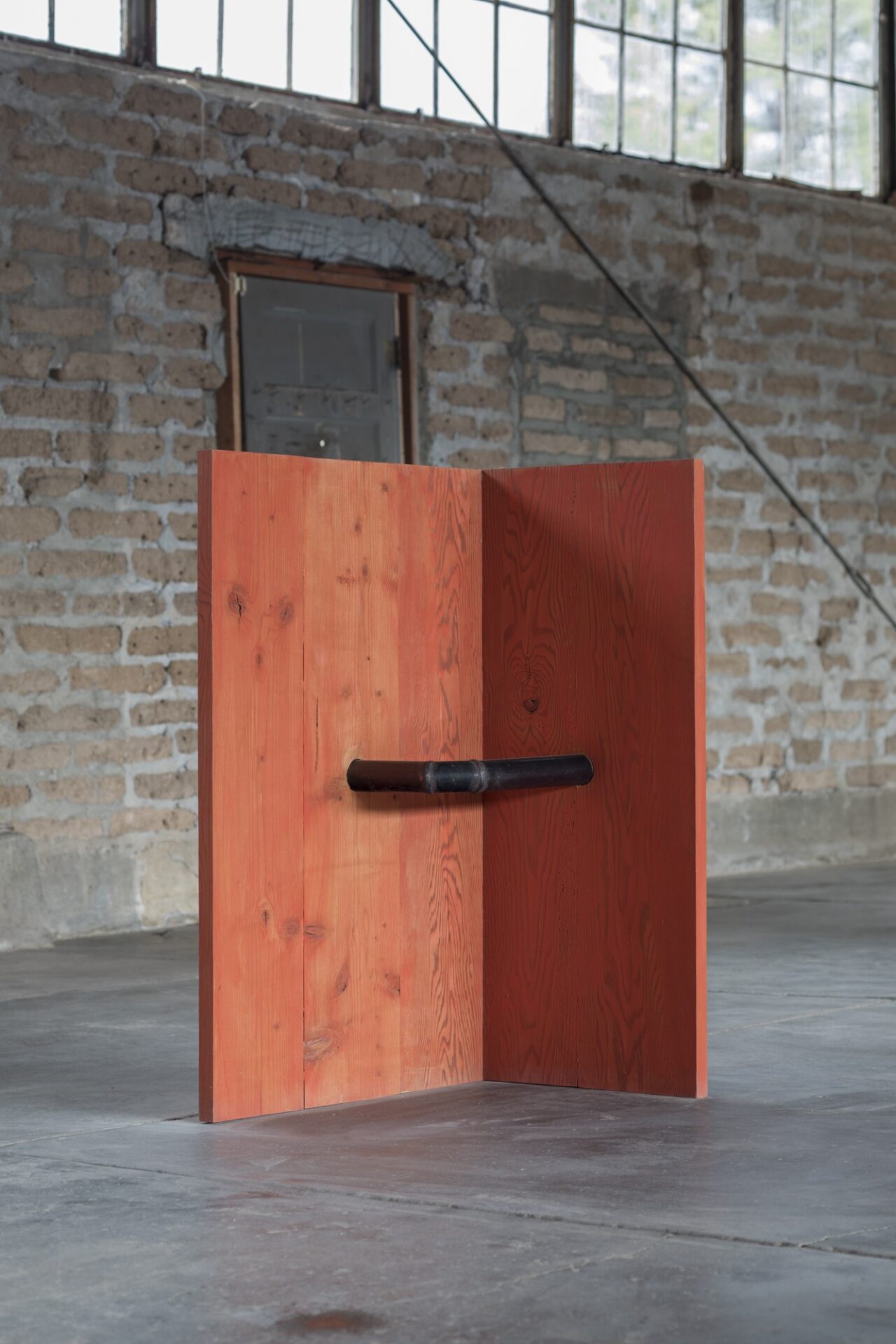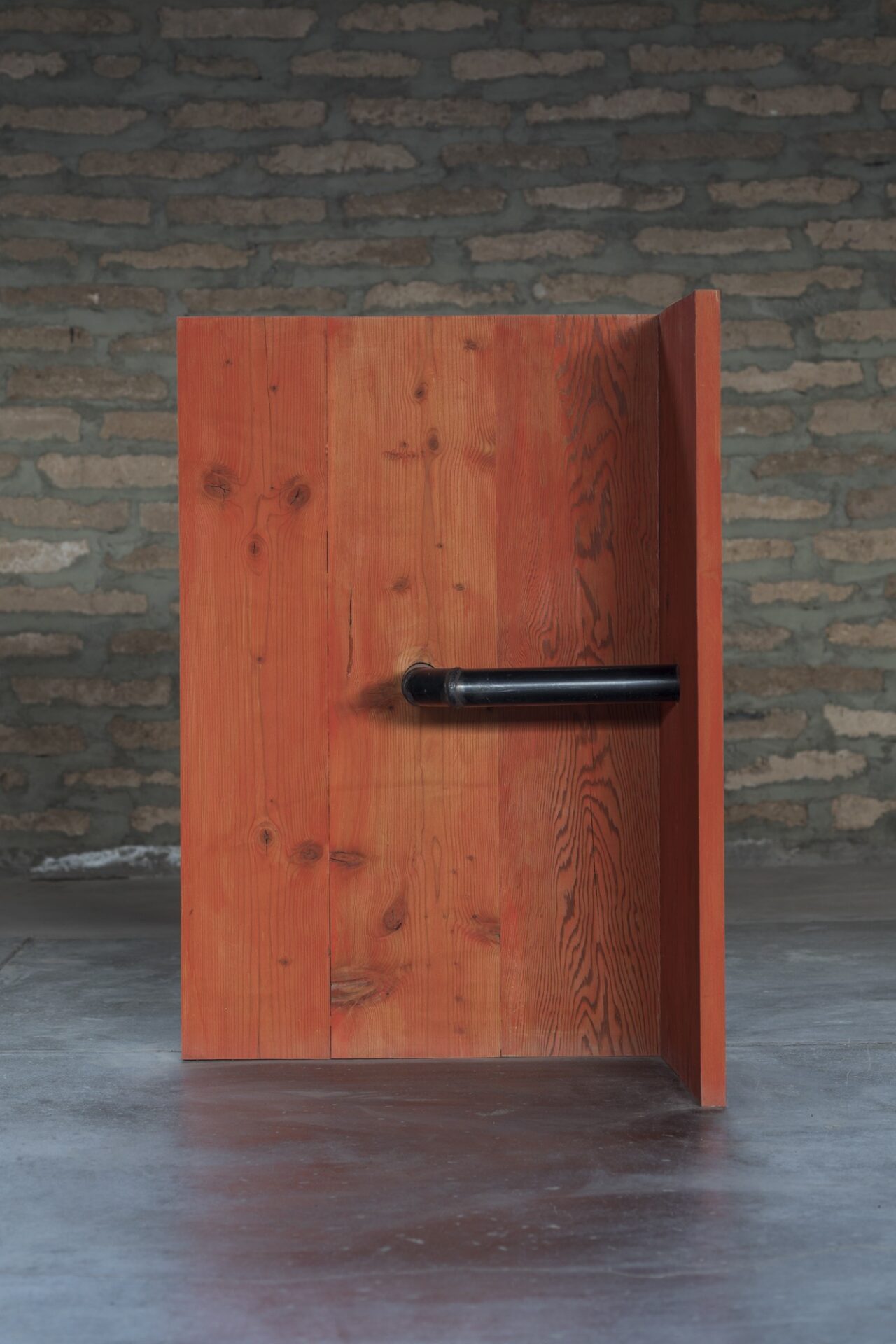Donald Judd wrote of this piece:
In 1962 I made a right angle of wood placed directly on the floor. . . . The size of the right angle is determined by the right angle of a black pipe, whose two open ends are the centers of the outer planes of the right angle, which is painted cadmium red light; red and black, and black as space. The right angle doesn’t stand or sit and although it is vertical, 122 centimeters high, there is no way to believe it to be an abstracted figure, or an abstracted object. All sides are equal. There is scarcely an inside and an outside, only the space within the angle and the space beyond the angle. The only enclosed space is inside the pipe. This slight linear space determines the dimensions of the broad planes. The shell of this narrow space passes through the breadth of the inner angle, a definite space through a general space.1
In a 1971 interview, Judd said of this and another early floor piece, “I was surprised when I made those first two free-standing pieces, to have something set out into the middle of the room. It puzzled me. On the one hand, I didn’t know quite what to make of it, and on the other, they suddenly seemed to have an enormous number of possibilities. It looked at that point and from then on that I could do anything.”2

